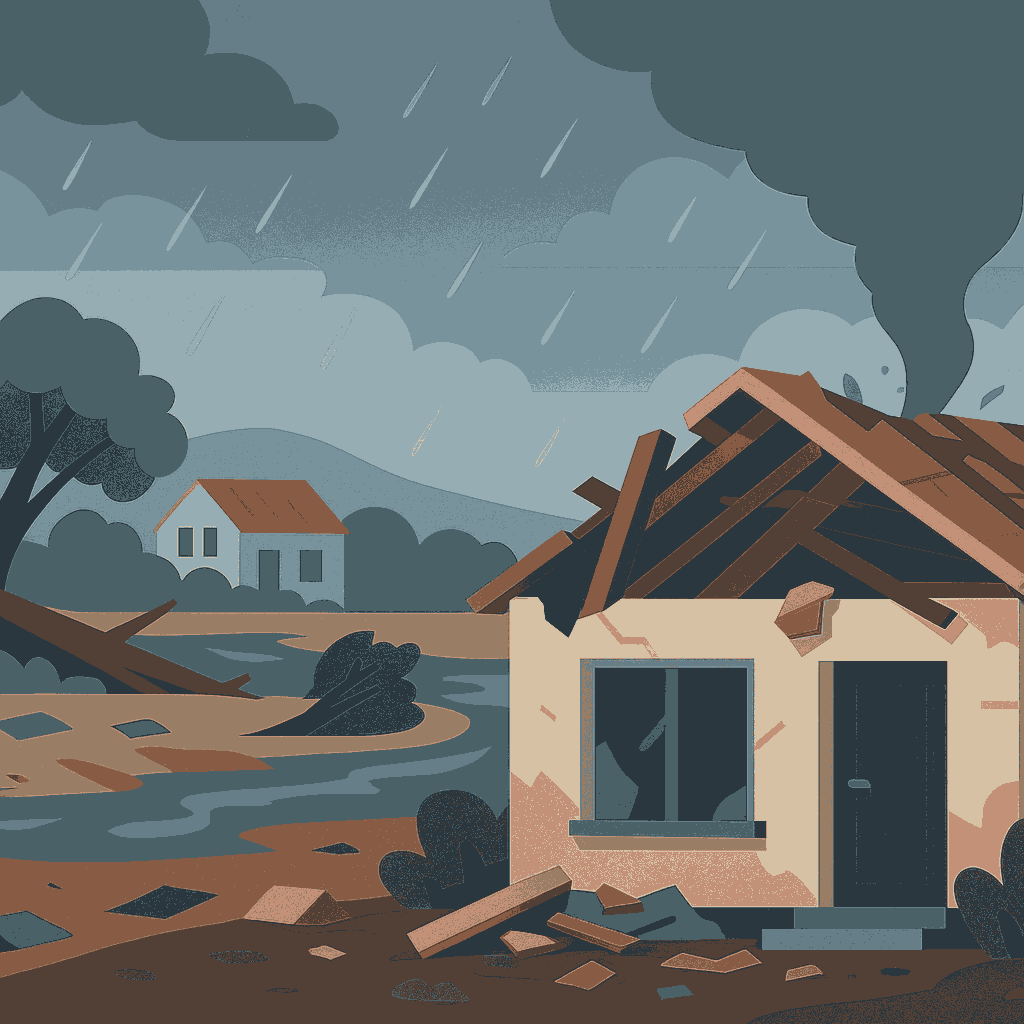When a natural disaster strikes(Filing Home Insurance Claims After Natural Disasters), it can leave more than just destruction in its wake. It disrupts lives, displaces families, and brings a wave of stress that continues long after the storm passes or the wildfire is contained. For homeowners, one of the first critical steps in the aftermath is filing an insurance claim.
In 2025, this process is more complex—and more important—than ever. As the frequency of extreme weather events increases across the United States, insurers are tightening claim requirements, updating documentation standards, and adjusting coverage terms. That means understanding how to navigate your claim properly can determine how quickly you recover—or if you recover financially at all.
Here’s what homeowners need to know today about filing home insurance claims after a natural disaster.
Natural Disasters and Insurance in 2025: A Changing Landscape
The U.S. has seen a notable uptick in hurricanes, wildfires, flash floods, tornadoes, and winter storms in the last five years. As these events become more intense and unpredictable, insurers have responded by:
- Increasing premiums for high-risk areas
- Reassessing claim thresholds
- Requiring more detailed documentation
- Imposing stricter deadlines for filing
What hasn’t changed is the basic promise of homeowners insurance: to help you rebuild and recover. But how well that promise is fulfilled depends on how well you understand your policy and execute your claim.
Step 1: Prioritize Safety and Contact Emergency Services
Before anything else, ensure that everyone in your household is safe. If there’s structural damage, avoid reentering the home until authorities or professionals give the all-clear. In emergencies, first responders and disaster relief agencies should be contacted first.
Once the immediate danger is over, it’s time to contact your insurer.
Step 2: Notify Your Insurance Provider Immediately
In 2025, most insurance companies offer 24/7 reporting through apps, websites, or dedicated hotlines. Contact them as soon as possible—even if you’re unsure about the full extent of the damage.
Early notification initiates the claims process and helps prevent delays. Some policies now require reporting within 48 to 72 hours, especially for major natural events.
Step 3: Document Everything Thoroughly
Insurers rely heavily on proof. That means the more documentation you provide, the smoother your claim process will be.
Start With:
- Photos and videos of all damaged property from multiple angles
- Close-ups of personal belongings affected (furniture, appliances, electronics)
- Water levels marked on walls or flooring if flooding occurred
- Notes on dates, times, and descriptions of the disaster’s effects
Pro Tip: If your area was issued an emergency declaration, include this in your submission—it can speed up processing.
Step 4: Prevent Further Damage
You have a duty to reduce additional losses after the initial disaster. If your roof was damaged, for example, covering it with a tarp can help avoid water intrusion.
Keep receipts for any temporary repairs or cleanup services. These may be reimbursable if deemed reasonable and necessary.
Avoid making permanent repairs before the adjuster visits your property unless approved.
Step 5: Meet with the Adjuster
An insurance adjuster will assess the damage and estimate the repair costs. In 2025, some companies are now using drones or remote video walkthroughs, especially in disaster zones where travel may be limited.
During the assessment:
- Walk the adjuster through all areas of concern
- Ask for a copy of their report
- Keep your own records of conversations and evaluations
Having a contractor or public adjuster present (at your expense) is increasingly common for larger claims. They can ensure that estimates reflect local rebuilding costs.
Step 6: Understand the Payout Structure
Most home insurance policies cover replacement costs or actual cash value (ACV). The difference is significant.
- Replacement Cost: Covers the full cost to replace items with new versions of similar quality.
- Actual Cash Value: Factors in depreciation and may leave you paying more out of pocket.
Initial payments may cover only part of the damages. Additional funds are often released after receipts are submitted or work is completed.
Deductibles also play a big role. If you live in a state like Florida, where separate hurricane deductibles apply, your out-of-pocket share may be much higher.
Step 7: Stay Organized Throughout the Process
Create a dedicated folder (digital or physical) for:
- Claim reference numbers
- Communication logs
- Receipts
- Inspection reports
- Repair estimates
This not only protects your rights but makes it easier to respond if the insurer requests more information or if you need to appeal a denial.
Common Pitfalls to Avoid
- Waiting too long to file: Delays can invalidate your claim.
- Not reading your policy in full: Understand exclusions, caps, and deductible terms before disaster strikes.
- Relying solely on memory: Visual and written evidence is essential.
- Accepting the first offer too quickly: You have the right to negotiate or provide additional documentation if the settlement seems low.
FEMA and Supplemental Help
If your policy falls short or you are uninsured, federal aid may be available. The Federal Emergency Management Agency (FEMA) can offer temporary housing assistance, grants, and low-interest loans. However, this aid is limited and should be seen as a last resort—not a substitute for proper insurance.
Preparing in Advance
The best time to prepare for a claim is before you ever need to file one. In 2025, smart homeowners are:
- Keeping digital inventories of personal belongings
- Storing policy details in the cloud
- Installing smart sensors that automatically document fire, flood, or intrusion events
- Regularly reviewing policy coverage and limits
Insurers are also rewarding preparation. Discounts may be offered for fire-resistant materials, storm shutters, or home monitoring systems.
Final Thoughts
Natural disasters can happen with little warning, but navigating your insurance claim shouldn’t feel like a second crisis. In 2025, U.S. homeowners who understand the system, document thoroughly, and act promptly are the ones most likely to recover fully—both financially and emotionally.
Having the right knowledge today could mean everything when tomorrow takes a turn.
